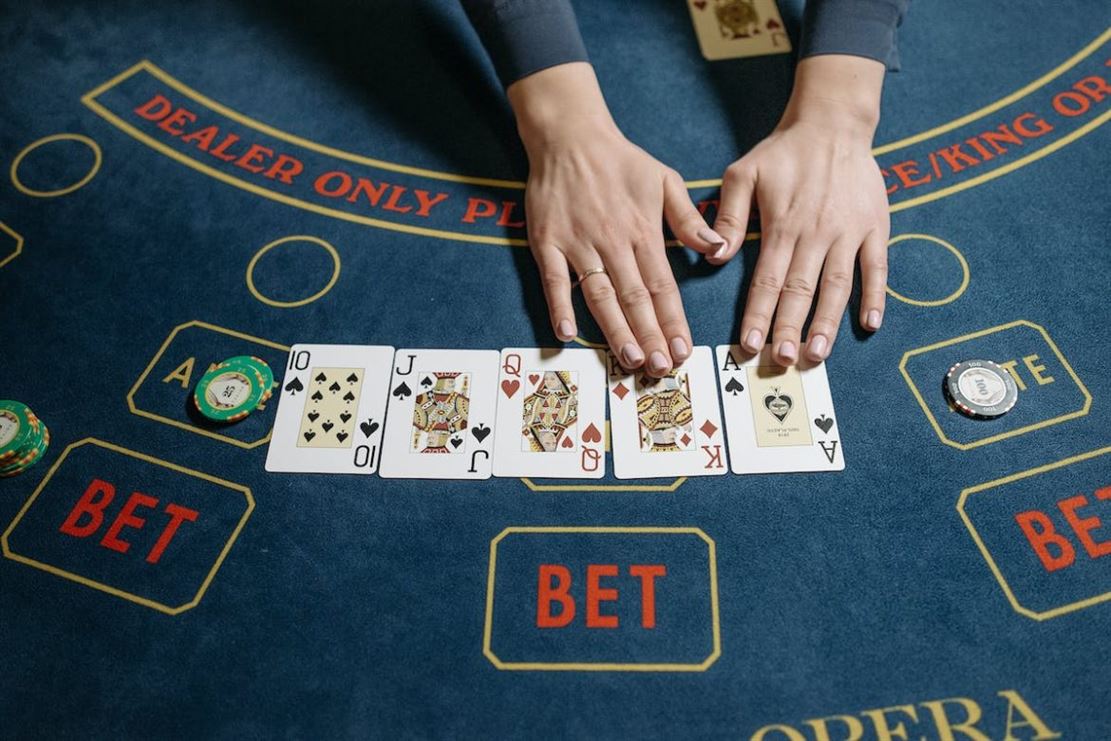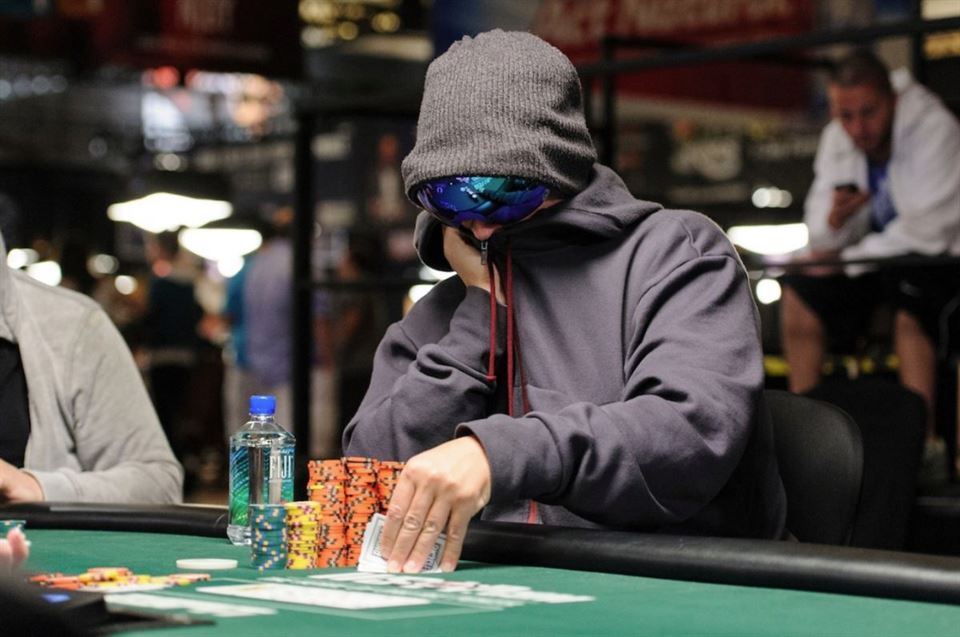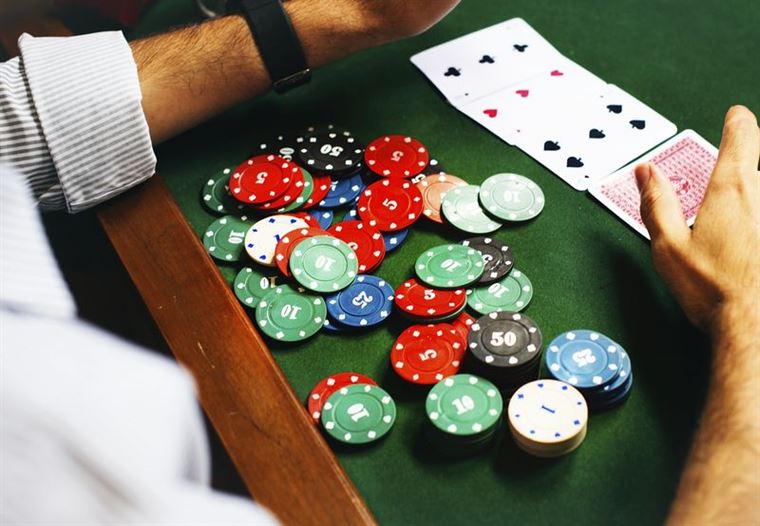“Reading Between the Lines: Mastering the Art of Poker Tells” is a comprehensive guide that delves into the intricate world of poker tells. This guide aims to equip poker players with the necessary skills to decipher and interpret the subtle cues and body language exhibited by their opponents at the poker table. By understanding and effectively utilizing these tells, players can gain a significant advantage in their gameplay, ultimately improving their chances of success in the game of poker.
The Psychology Behind Poker Tells: How to Read Your Opponents
Understanding the psychology behind poker tells is essential to deciphering the hidden messages your opponents are conveying. Humans are inherently social creatures, and even in a game as competitive as poker, we cannot completely hide our emotions. Our facial expressions, body language, and even the tone of our voice can betray our true intentions. By paying close attention to these cues, you can gain a significant advantage at the poker table.
One of the most common poker tells is the facial expression. A sudden twitch of the eyebrow, a slight smile, or a furrowed brow can all reveal valuable information about your opponent’s hand. For example, a player who suddenly smiles when they see their hole cards may have been dealt a strong hand. On the other hand, a player who frowns or shows signs of disappointment may be holding a weak hand. By observing these subtle changes in facial expressions, you can make more informed decisions about your own strategy.
Body language is another crucial aspect of poker tells. The way your opponents sit, move, and interact with their chips can provide valuable insights into their hand strength. For instance, a player who leans forward and appears more engaged may have a strong hand and is ready to make a move. Conversely, a player who slumps back in their chair and avoids eye contact may be bluffing or holding a weak hand. By observing these subtle cues, you can adjust your own strategy accordingly.
The tone of voice can also reveal important information about your opponents. A sudden change in pitch or volume can indicate nervousness or excitement, which may be a sign of a strong or weak hand. Additionally, the speed at which your opponents speak can provide insights into their thought process. A player who speaks quickly may be bluffing, trying to convince others of a strong hand. Conversely, a player who speaks slowly and deliberately may be confident in their hand and trying to intimidate others. By listening closely to the tone and speed of your opponents’ voices, you can gain valuable information to inform your own decisions.
While reading poker tells can be a powerful tool, it is important to remember that they are not foolproof. Some players are skilled at masking their emotions and intentionally giving false tells to deceive their opponents. Additionally, individual tells can vary greatly from person to person, so it is crucial to observe each player individually and not rely solely on generalizations. Furthermore, it is important to be aware of your own tells and try to minimize them to avoid giving away valuable information to your opponents.
Mastering Non-Verbal Communication in Poker: Decoding Poker Tells
Decoding poker tells is not an exact science, but it is a skill that can be developed with practice and observation. The first step is to understand that every player has their own unique set of tells. Some players may have obvious physical reactions when they have a strong hand, while others may display subtle changes in their behavior. It is essential to pay attention to these individual differences and look for patterns that can help you make accurate reads.
One of the most common tells in poker is the shaking hand. When a player’s hand trembles, it often indicates nervousness or excitement, which can be a sign of a strong hand. However, it is crucial not to jump to conclusions based on this tell alone. Some players may intentionally shake their hands to mislead their opponents, so it is essential to consider other factors before making a decision.
Another tell to watch out for is the eye movement. When a player looks at their chips or their cards, it can indicate that they are considering a bet or a raise. On the other hand, if a player avoids eye contact and looks away, it may suggest that they are bluffing or have a weak hand. However, it is important to note that some players may use reverse tells, deliberately trying to mislead their opponents by displaying false signs of strength or weakness.
Body language is another crucial aspect of reading poker tells. A player who sits up straight and leans forward may be confident and have a strong hand, while a player who slouches or leans back may be signaling weakness. Additionally, the speed at which a player acts can also provide valuable information. A quick decision often indicates strength, while a prolonged hesitation may suggest uncertainty or a bluff.
It is important to remember that tells are not foolproof indicators of a player’s hand. They are merely clues that can help you make more informed decisions. It is crucial to consider the context of the game, the player’s overall strategy, and the betting patterns before relying solely on tells. A player who consistently displays a particular tell may be aware of it and use it to their advantage, so it is essential to be cautious and not rely solely on one tell.
To master the art of reading poker tells, practice and observation are key. Spend time at the table, paying close attention to the behavior of your opponents. Take note of any consistent patterns or behaviors that you observe. Additionally, consider studying books or articles on the subject to gain further insights and strategies.
The Art of Bluffing: Understanding and Exploiting Poker Tells
Bluffing is an integral part of poker, and understanding poker tells is essential for successful bluffing. A poker tell is a physical or verbal cue that reveals information about a player’s hand. It can be as subtle as a slight twitch or as obvious as a nervous laugh. By observing and interpreting these tells, a skilled player can gain an advantage over their opponents.
One common tell is the shaking hand. When a player’s hand trembles while placing a bet, it often indicates nervousness or uncertainty. This could suggest that the player is bluffing or has a weak hand. Conversely, a steady hand can indicate confidence and a strong hand. By paying attention to these physical cues, a player can make more accurate judgments about their opponents’ hands.
Another tell to watch out for is the eye movement. When a player looks directly at their chips after seeing their hole cards, it often indicates a strong hand. This is because they are mentally calculating how much to bet to maximize their winnings. On the other hand, if a player avoids eye contact and looks away, it could be a sign of weakness or indecision. By observing these subtle eye movements, a skilled player can gain valuable insights into their opponents’ hand strength.
Verbal cues can also provide valuable information in poker. For example, a player who suddenly becomes talkative or starts engaging in small talk may be trying to distract their opponents from their weak hand. This is known as the “chatterbox tell” and can be a sign of a bluff. Conversely, a player who becomes unusually quiet or stops talking altogether may be trying to appear strong and confident. By listening carefully to the words and tone of their opponents, a skilled player can pick up on these verbal tells and adjust their strategy accordingly.
It is important to note that poker tells are not foolproof indicators of a player’s hand strength. They are merely clues that can help a player make more informed decisions. It is also crucial to remember that players can intentionally fake tells to deceive their opponents. This is known as “reverse tells” and can be a powerful weapon in the hands of a skilled player. Therefore, it is essential to consider multiple factors and not rely solely on poker tells when making decisions at the poker table.
Advanced Strategies for Spotting Poker Tells: Taking Your Game to the Next Level
One of the most important aspects of reading poker tells is observing your opponents closely. Pay attention to their body language, facial expressions, and betting patterns. These subtle cues can reveal a wealth of information about their hand strength and intentions.
Body language is a powerful tool in poker. Watch for any signs of nervousness or discomfort, such as fidgeting, sweating, or avoiding eye contact. These could indicate that your opponent is bluffing or has a weak hand. Conversely, a relaxed and confident posture may suggest a strong hand. However, it’s important to note that body language can be deceiving, so it should be used in conjunction with other tells for a more accurate read.
Facial expressions can also provide valuable insights into your opponents’ hands. Look for microexpressions, brief facial movements that reveal true emotions. For example, a quick twitch of the mouth or a raised eyebrow could indicate excitement or disappointment. Additionally, eye movements can be revealing. Dilated pupils may suggest a strong hand, while avoiding eye contact might indicate a bluff.
Betting patterns are another key tell to consider. Pay attention to how your opponents bet in different situations. Are they consistently aggressive or passive? Do they bet quickly or take their time? These patterns can help you decipher their hand strength. For instance, a sudden increase in betting size may indicate a strong hand, while a hesitation or small bet could suggest weakness.
In addition to these visual cues, verbal tells can also provide valuable information. Listen carefully to your opponents’ words and tone of voice. Verbal tells can be subtle but revealing. Pay attention to the words your opponents use and how they say them. For example, a hesitant or stammering response to a question may indicate a weak hand or uncertainty. On the other hand, a confident and assertive tone could suggest a strong hand. Additionally, listen for any changes in their speech patterns, such as an increase in speed or pitch, which may indicate nervousness or excitement.
Timing is another important factor to consider when spotting poker tells. Observe how long it takes your opponents to make decisions. A quick decision may suggest a strong hand, as they are confident in their choice. Conversely, a prolonged decision-making process could indicate uncertainty or a bluff. However, it’s important to note that timing tells can vary from player to player, so it’s essential to establish a baseline for each opponent.
To master the art of reading poker tells, it’s crucial to practice and refine your skills. Observe as many players as possible, both in live games and online. Take notes on their behaviors and compare them to the outcomes of their hands. Over time, you will develop a keen eye for spotting tells and using them to your advantage.
The Importance of Body Language in Poker: Unveiling Hidden Poker Tells
Body language is a powerful form of nonverbal communication that can reveal a person’s true thoughts and emotions. In poker, players often try to hide their intentions and emotions to maintain a poker face. However, even the most experienced players cannot completely control their body language, and that’s where the opportunity lies for observant players.
One of the most common poker tells is the shaking hand. When a player has a strong hand, their adrenaline levels rise, causing their hands to tremble slightly. This subtle movement can be a dead giveaway to their opponents. Similarly, a player who is bluffing may also experience a shaky hand due to the nervousness of being caught in a lie.
Another tell to watch out for is the eye movement. When a player is confident in their hand, they may maintain steady eye contact with their opponents, trying to intimidate them. On the other hand, a player who is unsure or bluffing may avoid eye contact altogether or glance away quickly. These subtle shifts in eye movement can provide valuable insights into a player’s confidence and the strength of their hand.
Posture and body positioning also play a significant role in poker tells. A player who is sitting upright with a relaxed posture is likely to have a strong hand and feel confident. Conversely, a player who is slouched or fidgeting in their seat may be signaling weakness or discomfort. Paying attention to these subtle cues can help players make more informed decisions during the game.
Facial expressions are perhaps the most well-known and studied form of body language in poker. A sudden twitch of the mouth, a raised eyebrow, or a slight smile can all reveal a player’s emotions and intentions. For example, a player who suddenly smiles after seeing their cards may have a strong hand, while a player who frowns or grimaces may be disappointed with their hand.
It’s important to note that reading poker tells is not an exact science. Every player is different, and their body language can vary depending on their personality and playing style. Therefore, it’s crucial to observe and analyze a player’s behavior over time to establish a baseline and identify patterns.
To become proficient in reading poker tells, players must also be aware of their own body language. It’s essential to maintain a consistent demeanor throughout the game to avoid giving away any unintentional tells. Being mindful of one’s own body language can help players maintain a poker face and keep their opponents guessing.
In conclusion, mastering the art of reading poker tells can give players a significant advantage at the poker table. By paying attention to subtle cues such as hand tremors, eye movement, posture, and facial expressions, players can gain valuable insights into their opponents’ thoughts and emotions. However, it’s important to remember that reading poker tells is not foolproof and requires practice and observation. So, the next time you sit down at a poker table, remember to read between the lines and use the power of body language to your advantage.




